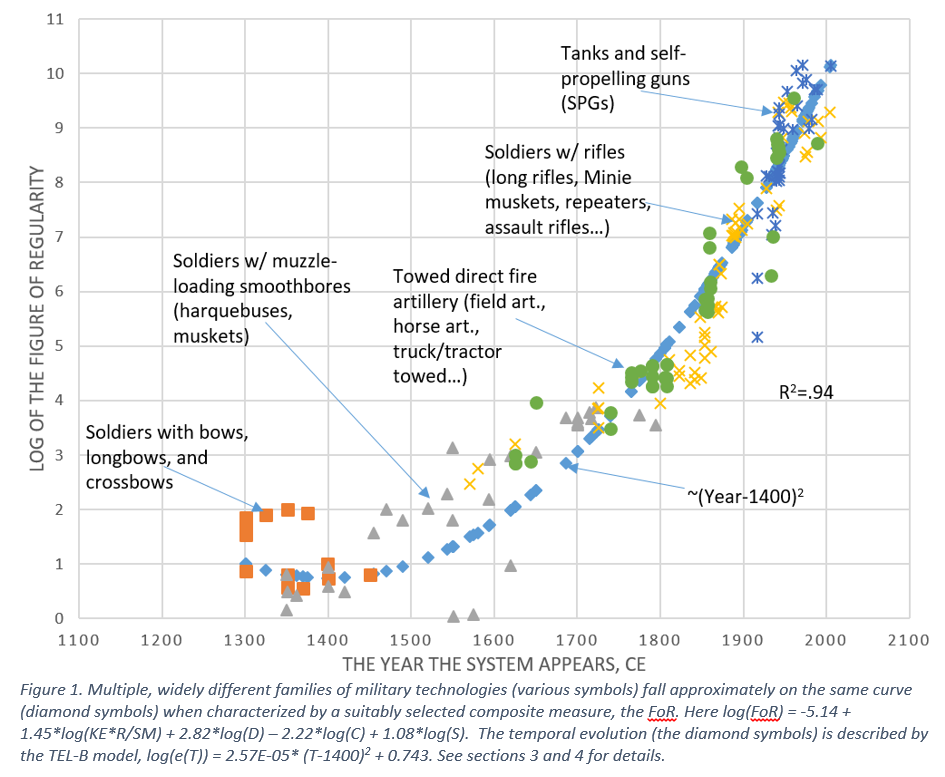Many years ago, Trevor Dupuy wrote the book The Evolution of Weapons and Warfare. One of great graphics from that book was:

This graphic either intrigued or excited the reader; or gave him serious heartburn. It was a little ambitious in a lot of people’s mind.
Well, I found something more ambitious here: https://www.defenseone.com/technology/2019/09/formula-predicts-soldier-firepower-2050/159931/
It produces this graphic:

There is a “press release” here: https://scitechdaily.com/u-s-army-research-uncovers-pattern-in-progression-of-weapons-technologies/
The actual more detailed article is here: https://admin.govexec.com/media/universallaw.docx
This link leads to the 28-page article by Alexander Kott, chief scientist of the Army Research Laboratory (ARL). It is an interesting idea. It is an idea that I also toyed with at times, but never took the time to actually turn into a meaningful set of formulae.
I will probably have a few more comments on this work in the next couple of weeks.

I am pretty sure that the first book of Mr. Dupey that I read was A Genius for War: The German Army and General Staff, 1807-1945
The reason I mention it is that I have been reading Kenneth M. Pollack “Armies of Sand: The Past, Present, and Future of Arab Military Effectiveness” and it reminds me of it in some ways. Somewhat a reverse as he is showing why Arabic armies tend to fail in certain ways versus similarly handicapped armies, not trying to show to succeed.
A lot of comparative analysis, a lot of of group sociology. Pollack does a fair amount of data comparisons, but doesn’t try to measure overall military effectiveness through combat modeling. But he makes some good points.
This is a goldmine of historical weapons information!
It seems to support the hypothesis that the gunpowder revolution occurred mainly because firearms had greater kinetic energy and so greater stopping power. Their range was short but within this range the effects were devastating.
There were other factors such as ease of use, but many non-gunpowder weapons (e.g. sling, javelin) were not very hard to use either but could not match the stopping power of the gunpowder weapons.
The accuracy of gunpowder weapons was low when shooting at a single figure of a man but the battlefield targets were originally large and slow moving, e.g. Swiss phalanx at Cerignola (1503) and Bicocoa (1522) . The use of stakes to defend gunners and firing by volleys (Nagashima 1575) or caracole also helped the gunpowder weapons to achieve higher rates of fire and so dominate over fast moving attacks like cavalry charges.
Fascinating topic.